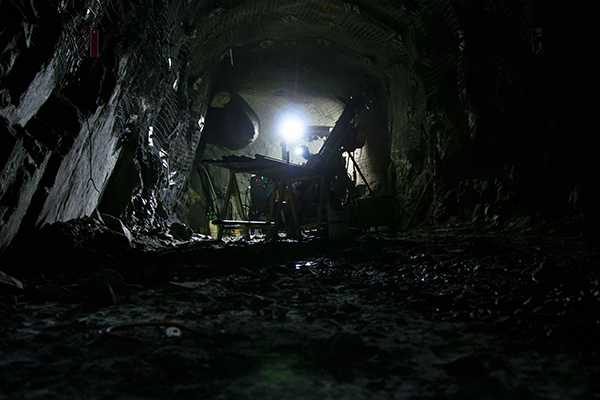A 10% or greater productivity increase is possible with a real-time, at-the-face monitoring system as part of a post-blast re-entry strategy.
While blasting is a necessary component for extraction of ore underground, the entire process surrounding it creates serious hazards and concerns for mine operators. The crews underground are often working in tight spaces, with dusty air, limited line of sight, and potential for toxic gas inhalation. Traditional underground blasting was highly inefficient and consisted of fixed time intervals, where crews would evacuate, and let a set amount of time pass after the blast was detonated, before they were allowed to re-enter.
Then came an evolution to a still somewhat rudimentary air quality testing with chemical stain tubes, simple dilution calculations, and at worst case, using a sense of smell to detect fumes. As modern tactics began to evolve in compliance with “as low as reasonably achievable” (ALARA) standards, personnel were still required to manually go underground with hand-held gas monitors to take readings and assess air quality. While this was a step towards safety, it remained inefficient, frequently causing delays of several hours or more per blast.

While blasting techniques and technologies continue to progress towards a safer and more controlled process, even the most well controlled blasts produce dust and air contaminants. Mining-specific explosives face strict regulations and are well calculated. Blast patterns have become a science to minimise cost, maximise face advance, and provide desired fragmentation. However, this still doesn’t eliminate the need for evacuation and re-entry protocols. The deeper the tunnels go, the greater the seismic hazard, and even more advanced tools are needed to assess the integrity of the tunnel structures to identify risk before personnel can enter to test air quality.
Modern-day real-time gas monitoring systems continue to advance the way mines streamline their post-blast re-entry protocol. The team at Ramjack is at the forefront of this process by integrating the most advanced fixed and wireless all-in-one gas sensors. The sensors take readings at the face and relay that information in real-time to a central server for analysis and action. This eliminates the arduous manual process, and keeps your personnel out of harms’ way.
Many air quality monitoring systems rely on wired connections, but for a system to provide maximum value, sensors must be installed as close to the face as possible. As such, battery-powered and wireless gas monitors are a necessity. Few mines want to install sensors close to the face and, those that do, can rarely afford to install multiple devices to meet all data requirements. This is why, at Ramjack, the device at the face serves as an “all in one” gas sensor, wet bulb temperature sensor, air velocity monitor, fan & pump controller, a tag reader for position tracking as well as a data logger for geotechnical applications. By having an all in one device that can talk WiFi, LTE and even UHF / VHF, mines are sure to get the data required for effective environmental monitoring at the face.
As a technology integrator, Ramjack’s objective is to support mine operations in realising the true value of advanced technology. Maximising the benefits of a real-time post-blast re-entry process for underground mines means:
- Improved cycle times
- Increased productivity
- Reduced downtime
- Enhanced safety performance
Nothing improves available shift work time and productivity like gas sensors that accelerate post-blast re-entry. But, for post-blast re-entry times to improve, the gas sensor must be at the face during the blast.
Personal gas detectors are important safety devices, but they are not very effective at improving productivity. The Ramjack Air Quality Monitoring System – monitored in a control room – is the most powerful tool to improve shift available time and create a step productivity increase of 10 to 30%. It does this by dispatching crews at the start of shift to the faces that can be worked and taking better corrective actions to the problematic faces.
Ramjack uses Conspec products for our post-blast re-entry projects because the products are agnostic and can connect with any type of network. Having provided the most reliable monitoring and process control systems for the widest range of underground operations around the world for the past 50 years, mining and tunneling operations turn to Conspec for atmospheric monitoring, ventilation management, and post-blast re-entry solutions to improve productivity and operational efficiency for increased cost savings, all while maximising the safety of underground environments for the best protection of personnel, property and profitability.

